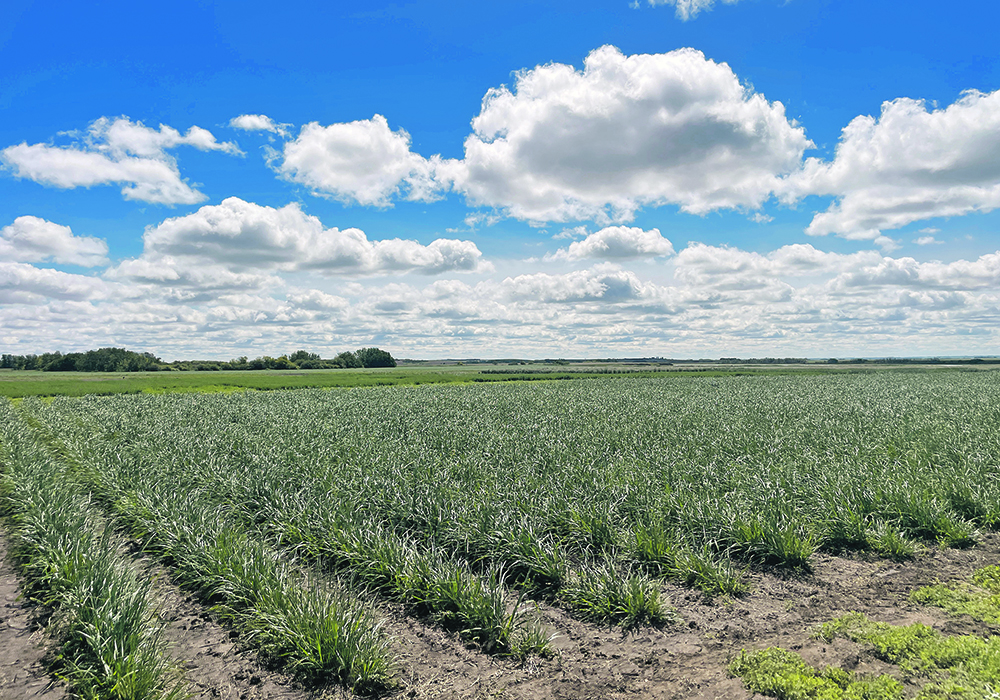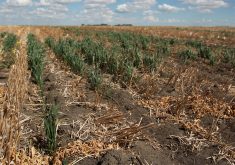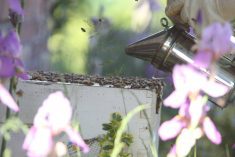Rainfall on the Prairies is much greater this year than last, though water expert Phillip Harder warns against setting high hopes for a continuing positive situation.
“2023 winter, so Oct. 1 up until April 15, we had 140 millimetres of precipitation,” said Harder, research associate at the Global Institute for Water Security at the University of Saskatchewan.
“We had the exact same thing last year, but it looks completely different just based on the timing and the conditions involved.”
Read Also

Alberta researcher helps unlock the economics of farming
Lethbridge Polytechnic researcher helping agriculture producers with decision-making tools in economic feasibility
Speaking at the recent Livestock and Forage Centre of Excellence field day, Harder referred to the variance in snowpack and rainfall, a key piece of his research.
He has been involved in two research sites at the forage centre focused on agricultural water interactions. They complement research by graduate student Jourdyn Sammons on soil moisture comparisons in annual and perennial grazing systems.
Sammons said her intent is to understand the hydrology and soil microbiology of paddocks at the forage centre. She discussed weather and hydrology trends of the last four years.
“In one of our meadow bromegrass and sainfoin paddocks, the deep moisture levels decrease consistently, not only across the grazing season, but consistently over the last four years,” she said. “That is partly due to the limited precipitation that we have received.”
However, the decrease wasn’t as pronounced in the fall rye and berseem clover paddock.
“When we evaluated our shallow soil moisture levels, we saw consistently that the annuals actually had higher shallow moisture levels compared to the perennial treatments and inversely have lower soil temperatures as well.”
Annual forages are highly dependent on shallow moisture and precipitation received during the grazing season, while perennial forages can access deep moisture to gain higher net productivity.
Harder said Sammons’ approach focused on soil moisture profiles and his research leaned toward field average values and quantifying water use in all seasons to close the water balance.
“Water in minus water out, and a change in storage for all these sites,” he said.
“And as a hydrologist, we want these numbers to all match up. But the challenge with this site is that we never could close the water balance. We were consistently about 20 per cent more water use than precipitation, whether that be rainfall or snowfall.”
Water use involves more than the growing season, he noted. Particularly during drought years such as 2021, perennial forages mine subsurface moisture with their roots.
This winter’s conditions, with late snowfall, lack of continuous snow cover and midwinter melt, were a concern, said Harder. Midwinter melts essentially cap the surface when it refreezes. Moisture received before that point goes into the ground but anything after that will run off, leading to greater variability.
“We may have had the impression this spring that we had more water than the last couple of years, but just because you see it doesn’t mean anything,” he said. “Previously, it all just went straight down. This time around, there’s a lot more spatial variability (because) depressions actually filled with water.”
The best years for snow melt recharge were the winters of 2021-23 because of early snowfall and snowpack on a dry surface, he said.
Though spring rains are great for water use efficiency, there’s not much moisture beneath the surface.
“On our annual site, there has been no soil moisture response down to 75 centimetres,” he said. “It’s just as dry as it was in fall. We need more moisture to recharge that. The challenge, though, is that once things start growing, they use the water that’s available.”
Sensor systems established at the centre in May show 100 mm of water use on the forage site, but only 84 mm of precipitation have fallen. That puts water balance in a deficit even before the summer months.
On the paddock with annuals, 65 mm have been used due to less root development at this point in the season.
“That changes very quickly as those roots develop,” Harder said. “It will catch up and we will have greater transpiration going on. So, long story short, we’re not out of the woods yet. Anything can happen.”
















